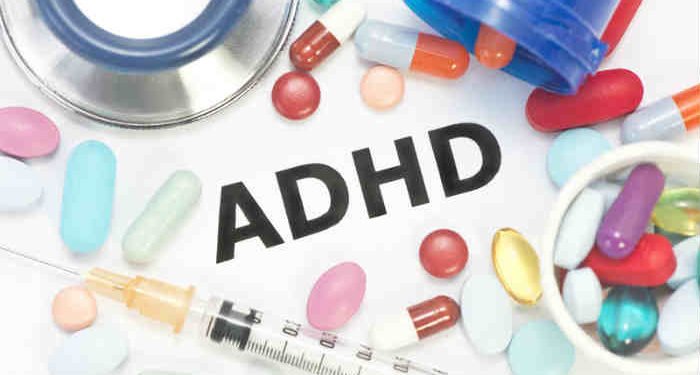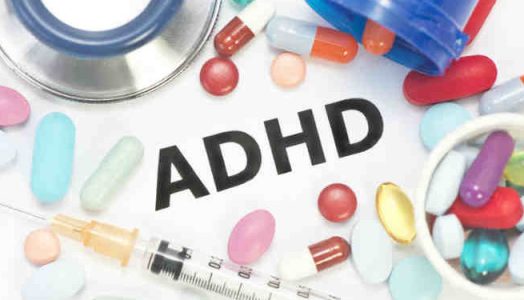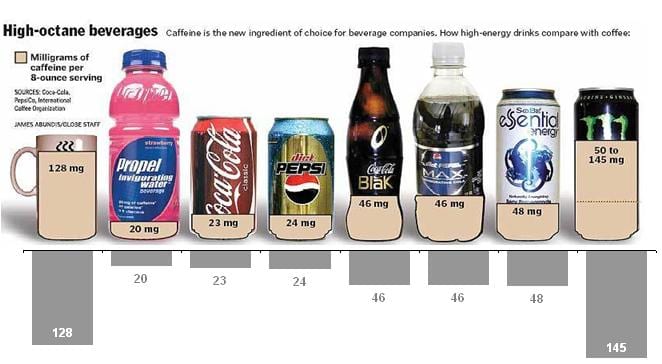We Are Responsible
“How did we get here,” Time Magazine asks? “How did the world’s greatest democracy and economy become a land of crumbling roads, galloping income inequality, bitter polarization and dysfunctional government?” How did we become so stupid that we let pharmaceutical companies, psychiatrists, doctors and governmental medical organizations bring us to the point that they are killing Americans in mass with opioid drugs and psychotropic drugs that are leading to one mass murder after another in schools?
“In 2015, 33,091 people died from opioid overdoses in the U.S. My sister was one of them. She passed away on July 31, 2015 at the age of 44. I often think about her last day and what her final moments were like. I also think about the person who gave her the drugs that ended her life. Below is what I might say to that person if we ever met.”
We are allowing our kids to be murdered. We are permitting criminal psychopaths to rule over our media, governments and medical institutions and we do not have the intellectual or emotional courage to do anything about it. Its not that we don’t know, we don’t want to know.
Doctors and the FDA are Guilty as Charged
We must start asking who was the killers doctor and what drugs was he taking? Dr. Kelly Brogan wrote, “What about serious risks – including impulsive suicide and homicide – surely we are informing patients of that possibility, right? Wrong. In fact, the FDA and the pharmaceutical industry have gone to great lengths to conceal multiple signals of harm, so we certainly can’t expect your average prescriber to have done the investigative work required to get at the truth. In fact, from 1999-2013, psychiatric medication prescriptions have increased by a whopping 117% concurrent with a 240% increase in death rates from these medications.”
Despite international drug regulators warning that these drugs can cause mania, psychosis, hallucinations, suicide and homicidal ideation, Congress has yet to investigate the role of psychiatric drugs in most school shootings. This is because politicians have sold their souls to the enormous influence of the pharmaceutical industry.
The New American concludes, “Famed psychiatrist Sigmund Freud once believed that cocaine, legal during his younger days, was the best cure for depression there’d ever been. “Bayer Heroin” was once advertised as a remedy for all sorts of ailments. Today, with one out of six Americans on some psychiatric medication, we ought to perhaps bear in mind that just because a drug is on the right side of the law doesn’t mean it won’t bring you to the wrong side of sanity’s line.”
We can watch the terror in real time almost each week in American schools and we can watch this video and see that there is a whole class of people and organizations that should be hung from the nearest tree.
Many of us are depressed because we should be depressed or terribly angry at where civilization and our leaders are bringing us. Our miserable politicians would rather us hate Russians, and risk nuclear war with them, because they do not want us burning down their houses in realization for what they are doing to Americans and their children.
“Get ready for two weeks of media coverage of politicians acting like they give a s*** when in reality they just want to boost their approval ratings before midterms,” Parkland student David Hogg tweeted.
No one should forget that the British Medical Journal warned everyone: “The FDA admitted in 2007 that SSRIs can cause madness at all ages and that the drugs are very dangerous; otherwise daily monitoring wouldn’t be needed: Families and caregivers of patients should be advised to look for the emergence of such symptoms on a day-to-day basis, since changes may be abrupt.”
At least one student at the Texas high school that became the scene of a mass shooting on Friday has said she wasn’t surprised. She’s been expecting this. “It’s been happening everywhere,” 17-year-old student Paige Curry said in an interview hours after the shooting. “I’ve always kind of felt it like eventually it was going to happen here too.”
And it is going to continue to happen until we have had it and cannot take it anymore and march on Washington, the Pentagon, as well as the offices of the FDA, CDC, AMA and doctors and psychiatrist offices threatening to burn down all their houses. The entire framework of the mainstream is caught up in what can only be considered pharmaceutical terrorism.
Symptoms of ADHD
No matter which type of ADHD a person has, the severity of symptoms, and the level in which it disrupts lives, varies widely. Nowadays, researchers recognize that diet, environment and other factors contribute to ADHD, for better or worse. (source)
Symptoms of ADHD in children, teens and adults:
- Inability to sit still; squirms in seat
- Easily bored and distracted
- Doesn’t listen, or seems not to process what is being said
- Difficulty in following even basic instructions
- Appearance of poor memory
- Prone to losing items, including school work and personal items
- Talks quickly and incessantly
- Difficulty in completing tasks
- Ineffective organizational skills
- Impatience
- General restlessness
- Anxiety
- Insomnia
- Large and frequent emotional swings
- Emotional outbursts
- Low tolerance of people, situations, and surroundings
- Prone to anger
- Hot temper
- Unstable personal relationships
Research also shows that individuals with ADHD are at an increased risk for addiction. (source) Indeed, the risk of addiction extends beyond the prescription stimulants and into alcohol and illegal drugs.
What Causes the Symptoms of ADHD?
There are many possible causes of ADHD. Studies have shown a range of possible causes and links to both behavior and environment of the mother as well as diet and environment of the child.
1. SMOKING
According to a recent European study published in European Child Adolescent Psychiatry, maternal smoking during pregnancy is associated with the development of ADHD. (source) In addition, the study also noted that smoking by either parent after birth may be linked to ADHD in children. Exposure early in life to lead and other chemicals like PCBs may also cause ADHD. (source)
2. DIET & GUT HEALTH
 Diet continues to show links to ADHD, including chemical food additives, wheat, refined sugar, food allergies and artificial sweeteners. While researchers may not know why more and more kids are being diagnosed with ADHD, reviewing charts about the American diet gives us some insight. Grain consumption is way up, as is sugar, salt, processed foods and GMOs, while the consumption of fresh fruits, vegetables and healthy meats are down.
Diet continues to show links to ADHD, including chemical food additives, wheat, refined sugar, food allergies and artificial sweeteners. While researchers may not know why more and more kids are being diagnosed with ADHD, reviewing charts about the American diet gives us some insight. Grain consumption is way up, as is sugar, salt, processed foods and GMOs, while the consumption of fresh fruits, vegetables and healthy meats are down.
Furthermore, there is evidence that the environment — such as exposure to lead or arsenic — and diet during early years affects the development of ADHD in later years. In fact, such ADHD symptoms as inattention, impulsivity and poor cognitive function are associated with arsenic, even at levels considered safe. (source)
I’ve discovered that one of the most promising solutions for ADHD is a low-sugar, low-inflammation diet, such as the GAPS diet or other types of healing diets. (source)
3. BRAIN INJURY
Another possible root cause of ADHD is traumatic brain injury. (source) It seems that the injury can cause various symptoms such as memory and attention deficits, as well as acting out and impulsive behavior.
4. GENETICS
In addition to these outside risk factors, studies show that ADHD has a genetic link in some individuals. If parents or grandparents have ADHD, children are more likely to develop symptoms — although, at this point in the research, it’s not clear whether this is actually a genetic predisposition or a diet and lifestyle similarity that causes ADHD to develop.
5. PUBLIC SCHOOLING
Kids don’t engage learning unless they’re engaged in collaboration, creativity, communication, critical thinking, and citizenship (The 5 C’s of 21st century learning). Rote memory learning drives any human being crazy. Children are brilliant, and no curriculum in the world that’s based on rote memorization, boring worksheets, and taking multiple choice tests will ever keep them quiet, still, and “paying attention” for more than a couple minutes. Students want to know the answers to their questions like, “What does this have to do with the real world?” and “How does this help us get smarter?”
In the DSM-IV (The American Psychiatric Association manual and the pages describing diagnostic criteria for Attention Deficit Disorders), any children who can’t pay attention for extended periods of time, who don’t complete their homework, or who are often distracted by “extraneous stimuli” are in need of prescription psyche medications. According to DSM-IV, “symptoms must be present for at least 6 months …” and required to cause “some impairment in at least two settings” for a diagnosis of a brain disorder to be applied. The DSM-V is even worse, and offers no clear guidelines. Well, did the DSM-IV offer any “clear” guidelines? What’s clear is that psychiatrists can now diagnose ANY child or adolescent anytime with ADD or ADHD.
What’s clear is that students need real world education instead of memorizing facts for tests that they completely forget three days later. What’s clear is that science proves that artificial food colorings, soda, and high fructose corn syrup cause severe hypersensitivity reactions, affect behavior, reduce cognition, deplete the retention of information, and cause mental distress. Where’s all that information in the DSM manuals? (source)
6. ARTIFICIAL FOOD DYES
There has been a 55 percent increase in U.S. toxic food dyes just since the year 2000. There are over 15 million pounds of dyes put in foods, drinks, candy and medicine every year, and the FDA does nothing to protect consumers from the barrage of poison.
Did you know that the industrial-based food dye Yellow #5 affects behavior and induces severe hypersensitivity reactions? Fact: Teenagers who drink more than one large soda (4 glasses) per day experience mental health difficulties, including hyperactivity and mental distress, according to a study recently published in the American Journal of Public Health. Those same soda drinkers also score lower on tests, per the scientific research conducted.
In conclusion, if your child is “suffering” from ADD or ADHD symptoms, before you rush to a medical quack for SSRI drugs that cause severe depression, suicides, and homicidal tendencies, change your child’s diet to organic foods (stop buying school meals all together), and talk to the school’s principals and administrators about engaging the students with some real world curriculum. (NaturalNews)
Natural Treatment for ADHD: DIET
In some ways, it’s simple: What we eat directly affects our bodies and behaviors. A healthy diet that is void of known ADHD triggers can help, sometimes significantly.
Foods That Make Symptoms of ADHD Worse
Sugar
In a study to be published in the Academy of Pediatrics, youths that drink sweetened beverages, including energy drinks, are 66 percent more likely to be at risk for hyperactivity and inattention. Researchers recommend limiting the consumption of sweetened beverages and the avoidance of energy drinks in children. (source)
It’s not just adolescents that need to avoid sugary drinks, however, as sugar is also associated with ADHD in some adults. Therefore, both kids and adults are encouraged to avoid concentrated forms of sugar, including fruit juices, carbonated beverages, desserts, candy and other sweets.
Gluten
In some research, gluten is directly linked to Celiac disease and ADHD in both children and adults. A study published in The Primary Care Companion – Journal of Clinical Psychiatry found a significant improvement in behavior and functioning after the initiation of a gluten-free diet. In fact, researchers suggest that Celiac disease should be included in an ADHD symptom checklist. (source)
It’s important to recognize that individuals can be sensitive to gluten but not have Celiac disease even though they suffer many of the same symptoms. For an ADHD diet, be sure to avoid all foods that contain gluten, including breads, pastas, cereals and processed foods. Look for gluten-free and grain-free alternatives.
Conventional Dairy
A 10-week study found that when conventional cow’s milk was removed from the diet of hyperactive preschool boys, symptoms of ADD/ADHD improved. (source) The diet also eliminated artificial colors, flavors, chocolate, MSG and caffeine.
If any ADHD symptoms arise after consuming dairy, it’s wise to remove it from the diet. Most conventional cow’s milk contains A1 casein that can trigger a similar reaction as gluten and, therefore, should be eliminated from the diets of both adults and children. Raw cow’s milk may be better for people with ADHD, in part because of its natural immunizing abilities, and goat’s milk doesn’t contain casein, making it a good substitute as well.
Food Coloring and Dyes
Consumption of artificial food colors (AFCs) has increased five-fold since 1950, showing average consumption of AFCs at 68 milligrams. Studies that have tested 50 milligrams or more have shown a link between AFCs and behavioral reactions, including hyperactivity in children. (source)
AFCs are found in nearly every processed food, including carbonated sodas, convenience foods, deli meats and cheeses, cereals, chewable vitamins, and toothpaste. As part of an ADHD diet, children and adults should avoid all artificial food colors and dyes.
Caffeine
A recent study published in Substance Use and Misuse indicates that caffeine and alcohol consumption is associated with anger and violence in teens. (source) Adolescents and adults with ADHD should avoid any energy drinks with a high concentration of sugar, caffeine and additional stimulants. (source)
While prescription stimulant medication is used for some individuals with ADHD, it’s imperative on an ADHD diet to remove all forms of caffeine, as it’s known to increase insomnia, anxiety, anxiousness and other ADHD symptoms. (source)
MSG and HVP
Individuals with ADHD should avoid MSG, hydrolyzed vegetable protein (HVP) and yeast extract. Yeast extract is a form of MSG, and while many people know to look for MSG on labels, many don’t know to avoid yeast extract. Even such natural prepared foods as deli meats, veggie burgers, sauces, gravies, salad dressings, crackers, pastas and spices contain it.
There’s a relationship between these additives and decreased dopamine levels. Dopamine is associated with the reward system and pleasure areas of the brain — balanced levels of dopamine keep impulsivity and activity in check.
Nitrites
The vast majority of processed foods, canned foods and lunch meats contain nitrites. Nitrites cause restlessness and anxiousness, which in turn can worsen symptoms of ADHD. In addition, nitrates in the diet are linked to an increased risk of type 1 diabetes, cancer and IBS.
Artificial Sweeteners
Artificial sweeteners such as acesulfame K, aspartame, benzene, cyclamates, saccharin and sucralose are associated with a wide array of serious side effects. These include cancer, obesity, increased heart rate, infertility, dizziness, headaches and memory loss.
While mentioned above that removing sugar is part of a successful ADHD diet, replacing it with artificial sweeteners is not the solution. Start to retrain taste buds by adding other flavors from herbs, spices and citrus while using other natural sweeteners in moderation.
Soy
One of the most common food allergens in the world, soy can cause many symptoms in allergic individuals, including hives, tingling in the mouth, wheezing, difficulty breathing and abdominal pain. For some, soy allergy can even result in anaphylaxis. In individuals without a known sensitivity, soy disrupts thyroid function and hormone levels in the body. This can cause ADHD or make the symptoms worse.
Continued on next page…





